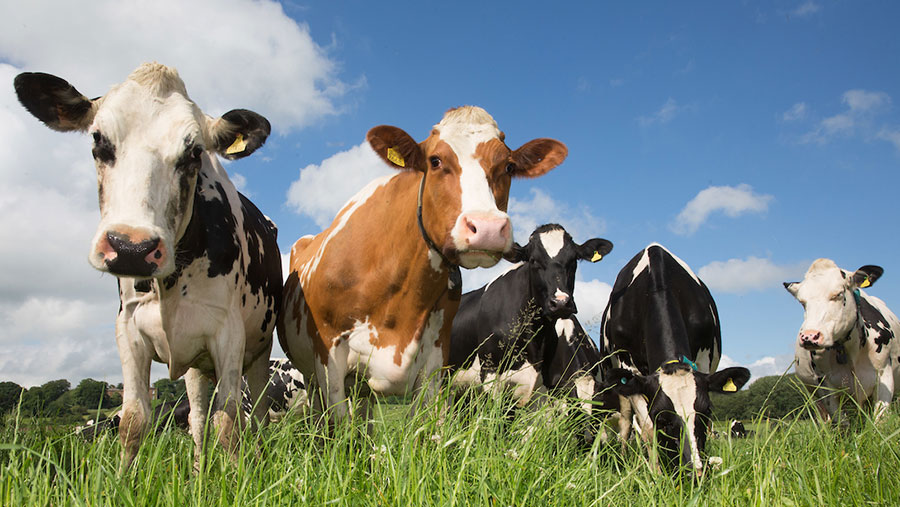What is the ideal DM to milk solids ratio to survive price volatility?
 © Tim Scrivener
© Tim Scrivener Producing 1kg of milk solids (MS) from 10kg DM of used pasture should be a target for everyone striving for a robust spring-calving system, according to research from Teagasc, Ireland’s agriculture food and development authority.
Pat Dillon, head of the animal and grassland research and innovation programme at Teagasc says the “10:1” ratio is a key performance indicator to survive milk price volatility.
The research farm at Moorepark is achieving figures of 1,300kg MS/ha and 13,000kg DM/ha used, as are some of Ireland’s best farmers.
Achieving the “10:1” ratio means you are producing most of you milk from home-grown grass, reducing reliance on concentrates and controlling your cost of production.
See also: How grassland award winner is growing 10.8t DM/ha
“Some top farmers are now achieving this,” he added. “It is an aspirational target for everybody.”
Dr Dillon says farmers can achieve this ratio by following good grazing-management principles and selecting cattle on a breeding index that rewards low-maintenance requirement, fertility and milk solids such as Ireland’s economic breeding index (EBI).
Working out the 10:1 formula
- 3 cows a ha need 14.1t DM/ha
- Yielding 400kg milk solids (MS) at 3 cows a ha equals 1,200kg MS/ha
- Growing 14.1t DM/ha equals 12t DM/ha used
- End result 12t DM/ha to 1,200kg MS/ha or 12:1.2
Figures based on 500kg concentrate a cow a year and 85% grass use
Hitting the metric means operating a sustainable system that makes best use of grazed forage, Paidi Kelly, Teagasc research officer at Moorepark, County Cork, told Farmers Weekly.
The main variable is the carrying capacity of the land, with the other main variables being milk solids yield, grass growth and grass use.
“Many farms are now at 2.5 or 3 cows per hectare after quota abolition, as part of significant national expansion which has taken place,” said Mr Kelly.
“But extra cows are only profitable if the milk is coming from grass. The top farmers are growing 15t DM/ha at 85% utilisation or better.
“If you don’t utilise 10t of grass for every tonne of milk solids then you need to buy in more feed above the 500kg a cow budget so cost of production goes up. This means you have a less robust system which will struggle more through years of lower milk price.”
Suitable for the UK?
Achieving the “10:1” ratio represents excellent technical efficiency for UK farms and an increasingly relevant target as UK processors increasingly reward milk components, according to dairy business consultant Tony Evans of Andersons Farm Business Consultants.
However, striving for top-performance metrics should not distract farmers away from controlling and scrutinising overhead costs.
“If you forget to control your overheads and you are hit by a poor forage season for example then your overheads have to be serviced by a lower margin,” he said.
“More people are plate metering and logging grass growth. They know how much they are growing but they don’t yet know their conversion in milk solids. This metric brings grass growth and conversion together.”
